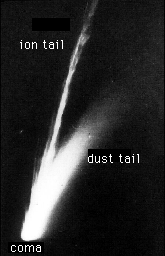This picture shows the two different tails of a comet - the dust tail and the ion tail.
Click on image for full size
JPL
The Comet Tail
A comet generally has two tails, not one. One tail is due to the comet's dust particles. The second is due to gas that comes from the comet
coma.
The picture on the left shows a comet with its two tails.
You might also be interested in:
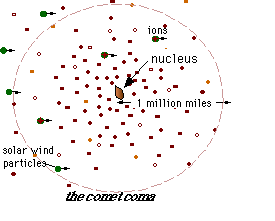
As the ices of the comet nucleus evaporate, they expand into a large cloud around the middle part of the comet. This cloud, called the coma, is the atmosphere of the comet. It can extend for millions of
...more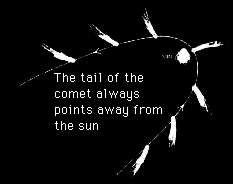
When comets are kicked out of the Oort Cloud, they begin a passage into the solar system, spinning and tumbling as they come. As the comet comes closer to the sun, near the region of space occupied by
...more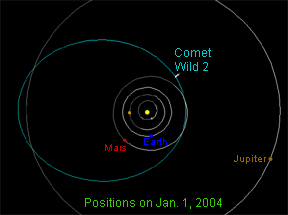
Comet Wild 2 is named after the scientist who discovered it. Paul Wild is an astronomer from Switzerland who discovered the comet in January 1978. Wild 2 is pronounced "Vilt 2". It takes the comet a little
...more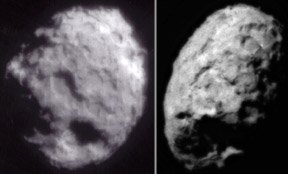
The pictures on this page show the nucleus of a comet. These are the best pictures ever made of the nucleus of a comet. The nucleus of a comet is a big lump of ice and dust. This one is about five kilometers
...more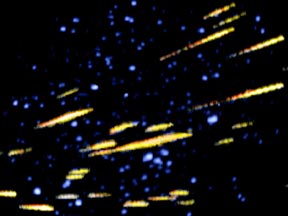
A meteor shower is an astronomical event during which many meteors can be seen in a short period of time. Most meteor showers have a peak activity period that lasts between several hours and a couple of
...more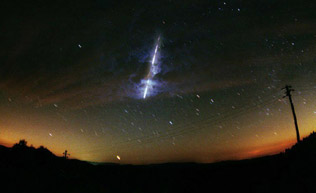
Meteors are streaks of light, usually lasting just a few seconds, which people occasionally see in the night sky. They are sometimes called "shooting stars" or "falling stars", though they are not stars
...more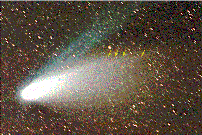
Comet Hale-Bopp was one of the brightest comets of all time. Astronomers witnessed the comet spew out intermittent bursts of dust. The surface seemed to be an incredibly dynamic place, with 'vents' being
...more


